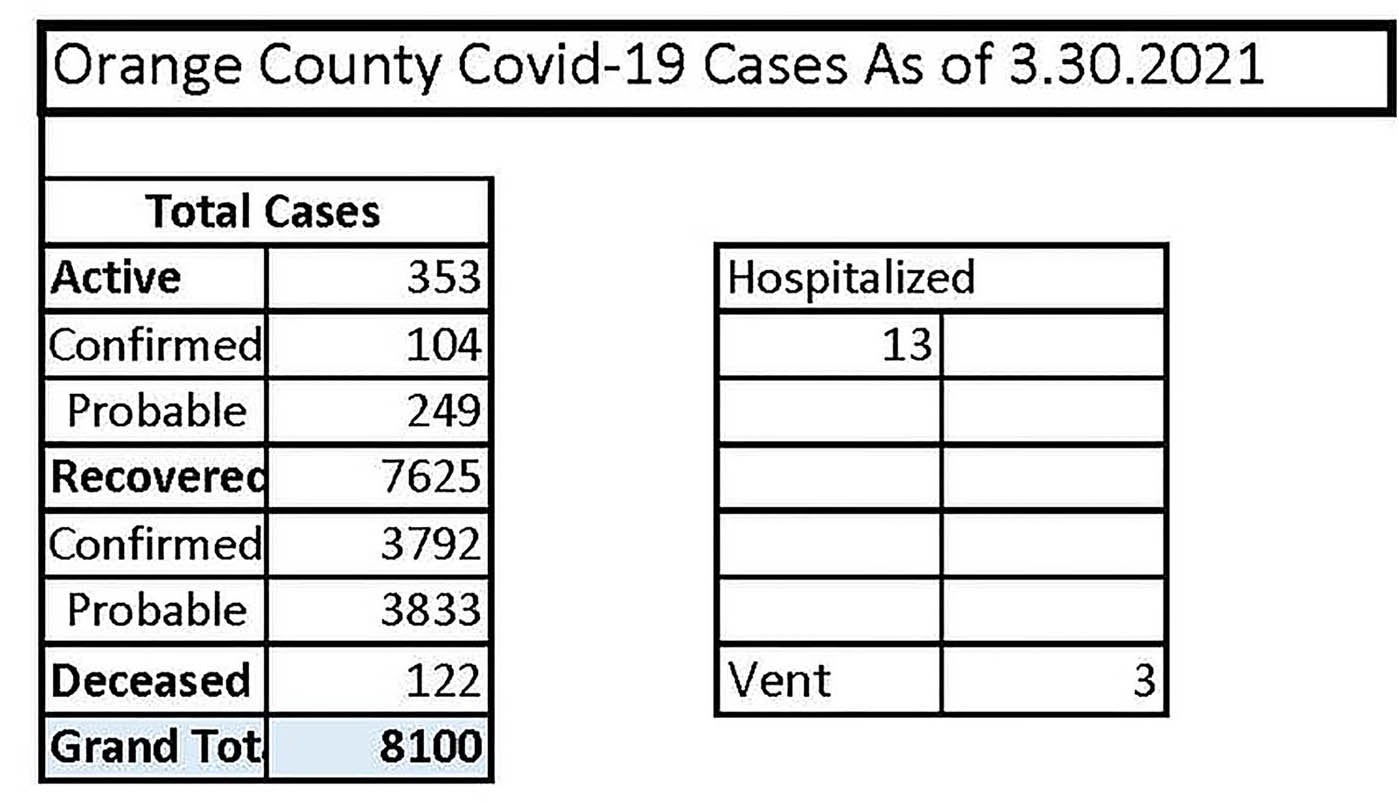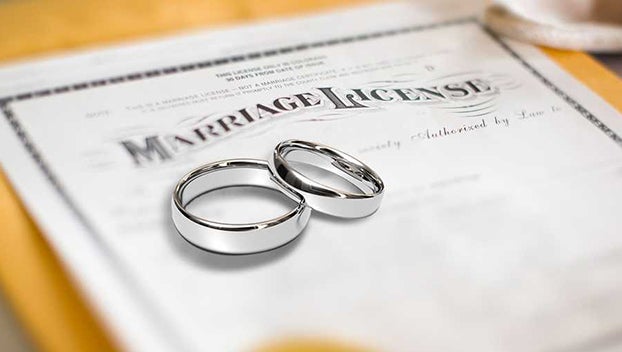Vaccinations impacting COVID numbers
Published 6:18 am Saturday, April 3, 2021
|
Getting your Trinity Audio player ready...
|
By Dawn Burleigh
Checking the lasted COVID chart will leaving one scratching their head as the numbers changed so much in one week. For example, the grand total cases of COVID in Orange County since March 2020 is now 8,100 – 88 less than the previous week.
The reason for the numbers being different is due to Hardin County Health Department working with the state on the database.
“We had 18 undocumented deaths due to COVID,” Sharon Whitley with Hardin County Health Department said. “There were also several duplicates [of cases] and we worked with the state to clean up the database.”
Looking at the totals under Gender, there were 35 less females and 54 less unspecified genders and one more male than the week before giving a result of a difference of 88 less than last week.
Also, under age ranges there were differences as well:
Six less for ages 0-10
20 less for ages 11-20
22 less for ages 21-30
21 less for ages 31-40
16 less for ages 41-50
23 less for ages 51-60
24 less for ages 61-70
Six less for ages 71-80
Nine less for ages 81+
59 more for Uncaptured ages
The math reflects a difference of 88 less than the week prior.
Whitley said in some cases a birthdate might not match between two documents so further research was needed to determine the actual age classification.
One number which increased during the week is the number of deceased. It rose by 18 to 122 since March 2020.
The current number of active cases at 353, is the lowest it has been since the week of July 8, 2020 when there were 317 active cases.
More people receiving the vaccination while people still practice social distancing and wear masks in crowded areas are contributing to the lower numbers.
For those asking if both doses of the two-shot vaccine are needed, yes, both shots are necessary to make sure you have the best level of protection against COVID-19. According to the Centers for Disease Control and Prevention (CDC), the COVID-19 vaccine works to teach the body to develop immunity against the virus.
The first dose of COVID-19 vaccine may offer some protection, but for the greatest level of protection, the second dose is needed a few weeks later. To best protect yourself and others around you, make sure to receive both doses of the COVID-19 vaccine, according to the U.S. Department of Veterans Affairs.
you still need to wear a mask and physically distance while in public even after receiving both doses of the vaccine. Experts are continuing to study the virus to better understand when it will be safe to stop wearing masks and physically distancing in specific settings.
The CDC has created guidance for those people who have received both doses of the vaccine, which can be found here: https://www.cdc.gov/coronavirus/2019-ncov/vaccines/fully-vaccinated-guidance.html. Continuing to wear a mask and socially distance can protect you and those around you in your community.
Currently authorized vaccines in the United States are highly effective at protecting vaccinated people against symptomatic and severe COVID-19. Additionally, a growing body of evidence suggests that fully vaccinated people are less likely to have asymptomatic infection and potentially less likely to transmit SARS-CoV-2 to others. How long vaccine protection lasts and how much vaccines protect against emerging SARS-CoV-2 variants are still under investigation. Until more is known and vaccination coverage increases, some prevention measures will continue to be necessary for all people, regardless of vaccination status. However, the benefits of reducing social isolation and relaxing some measures such as quarantine requirements may outweigh the residual risk of fully vaccinated people becoming ill with COVID-19 or transmitting SARS-CoV-2 to others. Additionally, taking steps towards relaxing certain measures for vaccinated persons may help improve COVID-19 vaccine acceptance and uptake. Therefore, there are several activities that fully vaccinated people can resume now, at low risk to themselves, while being mindful of the potential risk of transmitting the virus to others.
For the purposes of this guidance, people are considered fully vaccinated for COVID-19 ≥2 weeks after they have received the second dose in a 2-dose series (Pfizer-BioNTech or Moderna), or ≥2 weeks after they have received a single-dose vaccine (Johnson and Johnson [J&J]/Janssen). This guidance applies to all fully vaccinated people. However, people should discuss with their provider if they have any questions about their individual situation, such as immunocompromising conditions or other concerns.







